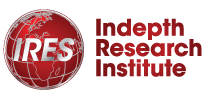Emergency nutrition interventions are typically carried out by humanitarian organizations, government agencies and healthcare professionals. They work collaboratively with community leaders to ensure timely and appropriate nutrition support to affected populations. They are therefore a line of defence in ultimately saving lives and mitigating the long-term consequences of malnutrition in emergency settings.
In emergency situations, where rapid response and effective interventions are crucial, corporate training plays a vital role in enhancing emergency nutrition response efforts. Corporate training organizations like IRES builds the capacity of and support humanitarian organizations and aid workers in addressing nutritional needs during crises. But what exactly is emergency nutrition and how does corporate training improve emergency nutrition response?
Contents
- 1 Understanding Emergency Nutrition
- 2 How Corporate training improves Emergency Nutrition Response
- 2.1 1. It Enhances Specialized Expertise
- 2.2 2. Corporate Training Promotes Technical Nutrition Practice
- 2.3 3. It Improves Logistics and Supply Chain Management
- 2.4 4. Training Enhances Food Innovation and Technology
- 2.5 5. Training Optimizes Financial and Resource Management
- 2.6 6. It Builds the Capacity of Humanitarian Organizations
- 2.7 7. Corporate Training Promotes Knowledge Sharing
- 3 Summary
Understanding Emergency Nutrition
Nutrition refers to the study of nutrients in food and how they are utilized by the body for growth, development and maintenance of health. It encompasses the process of consuming, absorbing and metabolizing nutrients to support various physiological functions.
Meanwhile, emergency nutrition refers to the provision of adequate and appropriate food and nutrition support during humanitarian crises, such as natural disasters, conflicts, or public health emergencies. These emergency situations often disrupt the normal functioning of communities, leading to food shortages, limited access to clean water and sanitation, and increased vulnerability to malnutrition.
The primary goals of emergency nutrition are to prevent and treat malnutrition, ensure the survival and well-being of affected populations, and promote recovery and resilience. It involves addressing the nutritional needs of individuals and communities in crisis. Most times, special attention is placed on vulnerable groups such as children, pregnant women, the elderly and lactating mothers.
Key Components of Emergency Nutrition
1. Nutritional Assessment
Rapid assessments are usually conducted to identify the nutritional status and specific needs of affected populations. Anthropometric measurements, health screenings and dietary surveys are commonly used to assess malnutrition rates and identify individuals requiring immediate intervention. These insights therefore help in making informed decisions on targeted interventions.
2. Therapeutic Feeding
Therapeutic feeding basically involves feeding vulnerable groups with ready to eat meals. Severely malnourished individuals, especially children, require therapeutic feeding. Therapeutic foods such as Ready-to-Use Therapeutic Foods (RUTF), are provided to restore their nutritional status and support their recovery.
These foods are nutrient-dense and can be consumed without the need for preparation or cooking.
3. Supplementary Feeding
Supplementary feeding programs usually target vulnerable groups that are at risk of malnutrition. These groups may include children under five, the elderly, pregnant women and breastfeeding mothers. These programs aim to provide additional nutrients to complement their regular diet and prevent malnutrition.
4. Infant and Young Child Feeding (IYCF) Support
Special attention is given to supporting appropriate feeding practices for infants and young children during emergencies. As such, it’s one of the key components of emergency nutrition. Promoting exclusive breastfeeding and providing safe and adequate complementary foods are crucial to preventing malnutrition within this vulnerable age group.
5. Micronutrient Supplementation
Micronutrient deficiencies are common during emergencies. Supplementation with essential vitamins and minerals is therefore crucial to prevent deficiencies and improve the overall health of vulnerable groups.
6. Water, Sanitation and Hygiene (WASH)
Access to clean water, adequate sanitation facilities, and good hygiene practices are essential for preventing disease and promoting proper nutrition. WASH interventions are closely integrated with emergency nutrition programs to address these critical needs.
Related: Why You Should Utilize GIS for WASH Programmes
7. Community Mobilization and Education
Community engagement and education play a significant role in emergency nutrition. Educating communities about nutrition, promoting good feeding practices, and empowering individuals to make informed choices regarding their diet and health are crucial for long-term impact and resilience. Vulnerable groups are more likely to adopt good feeding practices if they are well informed and are involved in interventions.


How Corporate training improves Emergency Nutrition Response
1. It Enhances Specialized Expertise
Corporate training brings specialized expertise to the field of emergency nutrition response. Organizations that offer corporate training programs have years of experience in building capacities and driving sustainability.
Additionally, they have experts who operate in the food and nutrition industry with extensive knowledge in food safety and nutrition research. By partnering with humanitarian organizations, they can transfer this expertise through training programs, thereby improving their understanding of nutrition interventions and best practices.
2. Corporate Training Promotes Technical Nutrition Practice
Corporate training programs offer technical training on areas such as food processing, nutritional analysis and quality control. This training equips humanitarian responders with the knowledge and skills needed to manage food supplies safely, thereby ensuring that affected populations receive adequate nutrition.
3. It Improves Logistics and Supply Chain Management
Corporate training firms have the expertise to provide valuable training in efficient distribution systems, warehouse management and inventory control. This knowledge helps responders optimize the delivery of food and nutritional supplies to affected areas. This has the added benefit of reducing delays and ensuring timely interventions. This would therefore enhance the nutrition response of humanitarian organizations and ultimately mitigate emergencies.
4. Training Enhances Food Innovation and Technology
Corporate training initiatives often focus on innovation and the use of technology. This is not any different within the humanitarian response context. Training equips responders with knowledge of innovative tools such as data management systems that can improve the efficiency and accuracy of emergency nutrition response.
These tools would provide key decision-makers with the insights to lead and respond to dynamic conditions. Utilizing technology therefore allows for better data collection, real-time monitoring and evidence-based decision-making.
5. Training Optimizes Financial and Resource Management
Training in financial and resource management equips responders with skills to effectively manage budgets and other resources. Equipped with this knowledge and understanding, humanitarian organizations can therefore allocate limited resources efficiently and reduce wastage. This ultimately maximizes the impact of emergency nutrition interventions.
6. It Builds the Capacity of Humanitarian Organizations
Corporate training organizations such as IRES can incorporate train-the-trainer programs, thus empowering humanitarian organizations to build their internal capacities. This creates a sustainable framework for emergency nutrition responses by equipping local staff and communities with the relevant skills and knowledge.
7. Corporate Training Promotes Knowledge Sharing
Corporate training fosters knowledge sharing and collaboration between the private sector and humanitarian organizations. This exchange of expertise helps build networks and partnerships that lead to more effective emergency nutrition response efforts. Collaborations can include joint research, program development, and sharing of best practices.
Summary
Corporate training plays a vital role in improving emergency nutrition response efforts by providing specialized expertise, technical skills, innovative approaches, and resources. Through partnerships between the private sector and humanitarian organizations, corporate training programs contribute to building capacity, promoting sustainability, and saving lives in crisis situations. By harnessing the knowledge and resources of corporations, we can enhance emergency nutrition response and provide better support to affected populations when they need it the most.
In the dynamic world of disaster management, proactive emergency response is critical. As a humanitarian worker, proficiency in emergency nutrition response is key. Fortunately, with corporate training, you can enhance your proficiency. Indepth Research Institute (IRES) offers comprehensive corporate training programs on nutrition for emergencies that would help you harness the power of data insights to launch successful interventions. Our training programs are specially curated and tailor-made to meet your needs, requirements and challenges. By acquiring and refining these skills, you will position yourself for success in today’s data-driven humanitarian interventions. Register now and be the best version of yourself!
[wpforms id=”1678″]
We have a firm belief that every organization has a unique purpose only they can fulfil in this world. We work with you in organizing your resources to exploit opportunities so that you can fulfil your purpose and realize full potential. We build the capacity of people, processes and systems for organizational success and growth as well as nurturing a thriving ecosystem.
Ready to enhance your skills and boost your career? Explore our corporate training programs now and start your journey to success.








Comment here